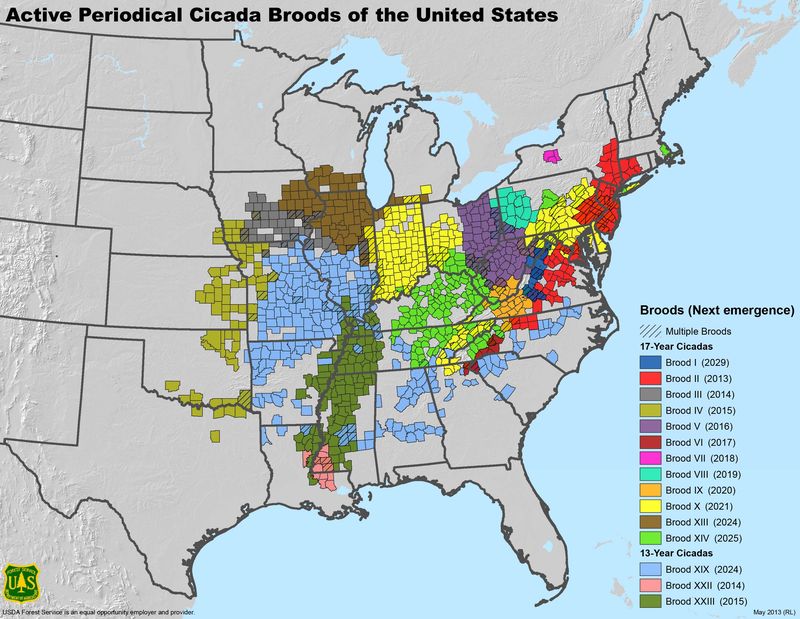Billions of cicadas prepare to invade Virginia, Maryland, New York, Ohio, Pennsylvania, and West Virginia
For 17 years, cicadas do very little. They hang out in the ground, sucking sugar out of tree roots. Then, after this absurdly long hibernation, they emerge from the ground, sprout wings, make a ton of noise, have sex, and die within a few weeks. Their orphan progeny will then return to the ground and will live the next 17 years in silence.
Over the next several weeks, billions of mid-Atlantic cicadas will hear the call of spring and emerge from their cozy bunkers. This year’s group is known as Brood V, and they were born in 1999 during the spring the first Star Wars prequel bewildered moviegoers.
But while they will emerge in biblical numbers, they’ll be blanketing only a small slice of the country.
Cicadas appear every year on the East Coast, though every year it’s a different 17-year crew that wakes up (Note: There are some 13-year broods of cicadas in the Southeast, too.) Emerging in these humongous yearly batches is likely an evolutionary strategy. There are so many cicadas, all at once, that predators (like birds or small mammals) can’t make a meaningful dent in their numbers.
In sum, the broods lay claim to much of the eastern United States, stretching from New England to Oklahoma. You can see all the United States broods on this US Forest Service map below.
This year, it’s Brood V’s turn (shown in purple). The brood mainly lives in Ohio and West Virginia, with some members spilling over to Pennsylvania, Maryland, and Virginia. (Not pictured: The cicada enthusiast website Cicada Mania reports some may even emerge in Long Island’s Suffolk County.)
Here’s a closer look at where Brood V lives, according to the Forest Service. (You can see more cicada brood maps on its website). Note that the brood hasn’t taken up residence in the major metropolitan areas of Pittsburgh, Cincinnati, or Washington, DC. Cleveland, however, is likely to see some.
Amazing Cicada life cycle – Sir David Attenborough’s Life in the Undergrowth – BBC wildlife







Комментариев нет:
Отправить комментарий